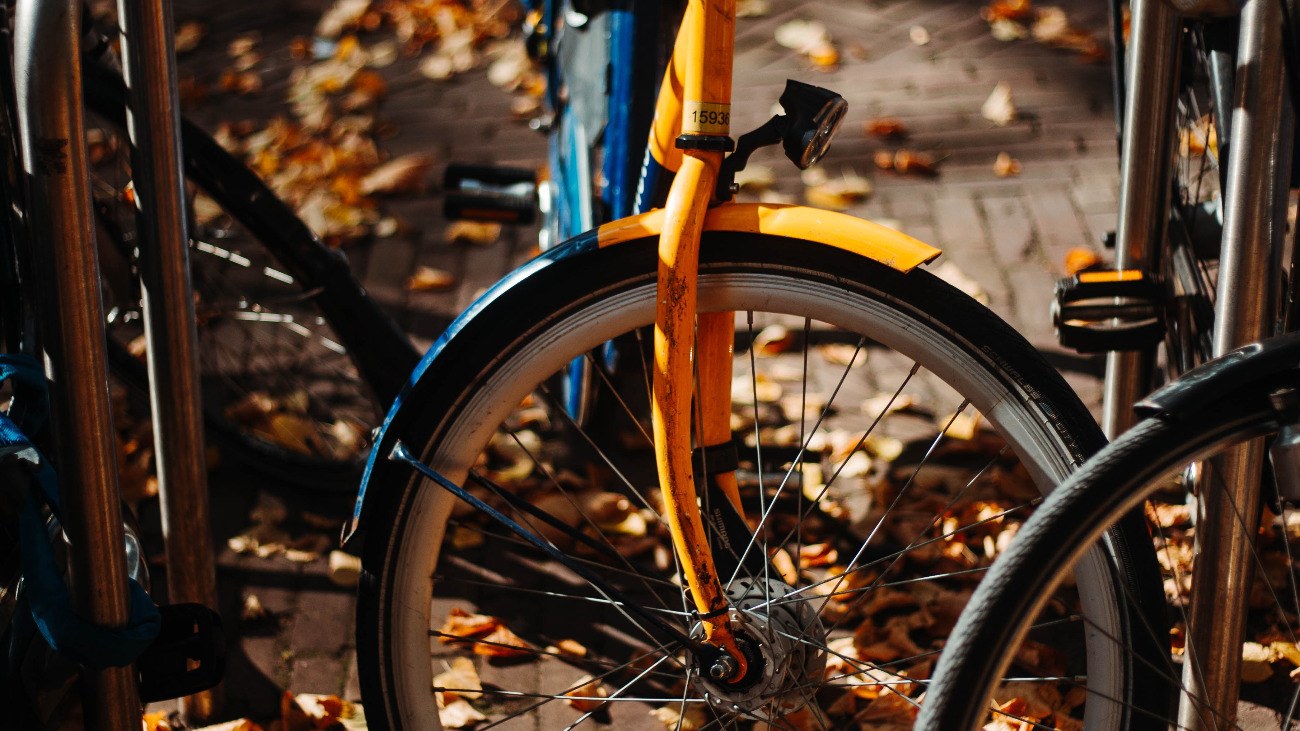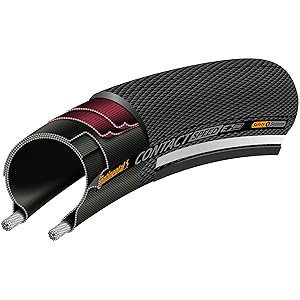For a cyclist, getting a puncture is one of the worst things that could occur other than an accident. Yet if you buy smart and get good quality tires, you could reduce the odds of suffering those pesky punctures more than you’d imagine.
Our guide to the best tires for cycling commuters will steer you in the right direction and make your morning (and evening) commute more pleasant than you could ever imagine. In the next few minutes, you’ll know more about tires for commuting than you ever knew before. And being a tire nerd has some significant advantages…
The huge range of bike tires can be overwhelming, making your decision harder rather than easier to make when looking at which ones to buy.
We’ve chosen several of the best bike tires for commuters on the market to make the process easier for you to manage. Including several key features and benefits, each tire has the power to vastly improve your future commuting time and comfort. All that and less chance of suffering punctures, too. That’s just about the best outcome you could hope for.
The Best City Bike Tires For Commuters
1. Continental Tour Ride Urban Commuter Bicycle Tire
This affordable urban bicycle tire features Puncture Protection Technology to keep you on the road for longer. Featuring a wire bead around the inside of the tire, it provides a sturdy and supportive fit.
You’ll need two tire levers, your inner tube, and a cycle pump to help fit the new tire. The tread has been developed to cope with a mix of surfaces, so even if you go off road for a short part of your commute, you can be confident these Continental Tour tires can cope with it. The tire has been created to provide great traction and high mileage.
2. Continental Contact Plus Commuter Bike Tire
Another tire option from the Continental range, this Contact Plus tire has a universal tread pattern. This provides great traction on every surface from tarmac roads to trails through the forest or park. The tire includes a rubber inlay designed to protect against anything that may puncture the tire.
The low rolling resistance makes cycling easier and far more pleasant across all surfaces, with far less chance of punctures too. Nothing can be 100% puncture resistant, but this sensational tire manages to get very close, giving you additional confidence on every ride.
3. Continental Contact Speed City Bike Tire
If you intend to ride your bike only to and from work in the city or town, this Speed City option is the ideal one for you. When you don’t intend to ride off road, a tire tread designed for maximum contact with tarmac roads is the perfect choice.
This tire includes powerful Kevlar puncture protection with a wire bead to keep its shape during use. It’s light too, offering you greater speed, convenience, and control. It is also available in an impressive range of sizes to suit all bikes and is certified for some e-bikes as well.
4. Continental City Ride II Reflex City Bike Tire
This tire from the Continental range is highly rated by commuters who have tried it. Affordably priced, the tire weighs in at 600 grams and offers a smart tread pattern designed to cope with all the challenges of the usual city commute.
It can be inflated to between 56 and 70 psi, giving you some versatility if you prefer softer tires. You can also appreciate lower rolling resistance with more of the tire in contact with the ground as you ride. The tire also features additional puncture protection by way of an insert between the tire and inner tube.
5. Continental Ride ETRTO City Bike Tire
One of the leading options for those shopping online for a city bike tire, this entry to the Continental range is also very highly rated by shoppers. The solid tire features a minimal tread pattern to ensure greater contact with the road or path.
Designed to provide excellent service to cyclists in towns and cities, it is also strong enough to cope with gravel paths. It features an extra PunctureBelt inside the tire with reinforced sidewalls to protect against the chance of a puncture from that direction too. Also suitable for e-bikes, tested at 25 km/h.
A Buyer’s Guide to Commuter’s Bike Tires

Many commuters rely on their trusty road bike to get them to and from work each day. Cycling can often prove faster and more convenient than any other available method… unless you get a puncture, that is. That said, there are still many advantages to cycling, not least the improved health you’ll enjoy from the daily exercise.
If you have only just started cycling to work and back, you might be thinking of ways to make that journey even more pleasant. A comfy ride with minimal risk of punctures would make a good start, right?
So, with that in mind, let’s review the different types of commuter bike tires you’ll find when you’re looking to buy some. We can’t promise you’ll be a tire expert by the time you finish reading this, but you’ll be pretty close.
The three main types of road bicycle tires
Here they are:
- Those that use inner tubes (clinchers)
- Those that do not use inner tubes (tubeless tires)
- Tubular tires (where the tire is a complete tube with an inner tube sealed inside it)
Tubular tires aren’t the best option for commuting cyclists to use, so we’ll disregard those to reduce our options a little. Unfortunately, to make things a little more complex once again, we should tell you that clincher tires come in two variations as well – ones that fold and ones that don’t.
The difference between folding clincher tires and rigid clincher tires (apart from the folding and non-folding aspect) is price. You’ll pay more for the folding ones, but you get an advantage in that if you do get a puncture, they’re a lot easier to remove and replace once the puncture is fixed.
As for tubeless tires, these do not use inner tubes, as the name suggests. Instead, they use a liquid sealant to fill the tire ready for use. They are sealed direct to the rim, so once inflated the air stays inside. (Yep, even though they use sealant they do still need inflating.)
Things to consider with clincher tires
You’ll need to carry a puncture repair kit and some tire levers with you whenever you head out on your bike. If you get a puncture, both will be required to fix it. Both are very cheap to purchase though. Cheap enough that you could keep a spare set in your office drawer and at home in case you misplace a lever or use any patches.
You might also want to carry a spare tube in case the puncture is too big to repair. These tires are usually a lighter option than their tubeless counterparts.
Things to consider with tubeless tires
We already know they are heavier. They can be a lot harder to fit when you first buy them too. If you are thinking about getting them, you might want to ask your local bike shop if they will do it for you. They’ll have the equipment to get them properly seated on the rims – essential if they are going to work properly.
You also need to be sure your rims are suitable for these tires – they do not fit all rims. That might make your purchasing decision for you. If you really want to buy these, you’d need to upgrade your rims to compatible ones.
The sealant in these tires means that if you ride over something that would ordinarily leave you with a flat, the sealant seals the hole and keeps you cycling on. You still need to inflate them before use, but there is a lot more leeway on the PSI you can use. If you prefer riding on softer tires, tubeless ones can take the pressure.
Get a grip
Look at your average mountain bike and you’ll find knobbly tires. Look at a road bike and the tread will be far less pronounced. Very much the opposite, in fact. That is intentional, as the tire is going to encounter broadly flat surfaces rather than muddy off-road challenges.
If you regularly ride on relatively decent roads, look for tires with a minimal, i.e. smooth pattern. This means more of the tire grips the road surface and therefore provides greater safety for you. Riding a bicycle on the road with knobbly tires is going to slow you down too. Not something your boss will be happy about, no doubt.
Know your pressure
Each tire should come with a recommended pressure. You’ll notice the tubeless tires often have a range, since the sealant offers greater versatility in this area. With regular inner tube tires, you’ll get one figure to stick to. Even with those tires though, you shouldn’t have them too hard or you’ll minimise the contact you get with the ground.
Other points to think about
Always check the diameter of your wheels prior to purchase, so you can be sure of buying the right tires to fit. Look at width too for the same reason.
Some road bike tires also have reflective strips around the edges. This is a minimal strip that still shows up very nicely whenever light hits it. If you are cycling on roads and cycle paths every day, the more you can do to stay visible, the better off you’ll be. This is particularly relevant during the darker winter months.
Finally, durability is a big feature to think about. You’ll pay more for tires designed to be puncture-resistant and more durable, but they will last longer and give you better service too. If your current tires are puncturing every few weeks (or maybe even more often), you’ll know how frustrating it is to be held up on yet another journey.
The roads are liable to be littered with stones, glass, and other sharp objects. Avoiding them isn’t always easy when you’ve got your eyes on everything else going on around you. Investing in some smart tires for your road bike is undoubtedly one of the best investments you can make after a decent commuter helmet.
Conclusion
The most important thing to remember before you buy your new bike tires is to do your research. Know what you want and what you should look for to support you on your daily commute. There are many factors to consider and no two commutes are identical. A mix of terrain could mean you need a different tire to the one you’d use if you were continually cycling on city streets. While budget is important, we would recommend you can get the best bicycle tires you can afford. It could save you time and hassle with far fewer punctures.





